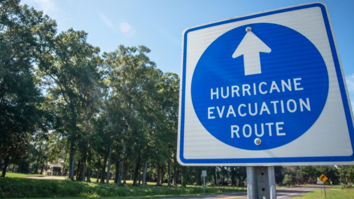Hurricanes, Tropical Storms & Storm Surge

Tropical Storm
A rotating low-pressure weather system with organized thunderstorms but no fronts. Tropical storms have sustained winds between 39 mph-74 mph. Tropical storms may develop into a hurricane.
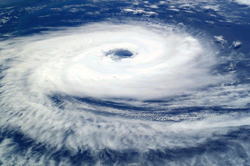
Hurricane
A rotating low-pressure weather system with maximum sustained winds reaching 74 mph. A hurricane typically develops from a Tropical Storm.
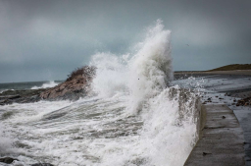
Storm Surge
Storm surge is the rise in water level caused solely by a storm. This is primarily caused by the storm’s winds pushing water onshore. Storm surge can cause coastal flooding.
Potential threats from Tropical Storms & Hurricanes:
- Heavy rainfall
- High Winds
- Storm surge
- Coastal and inland flooding
- Tornadoes
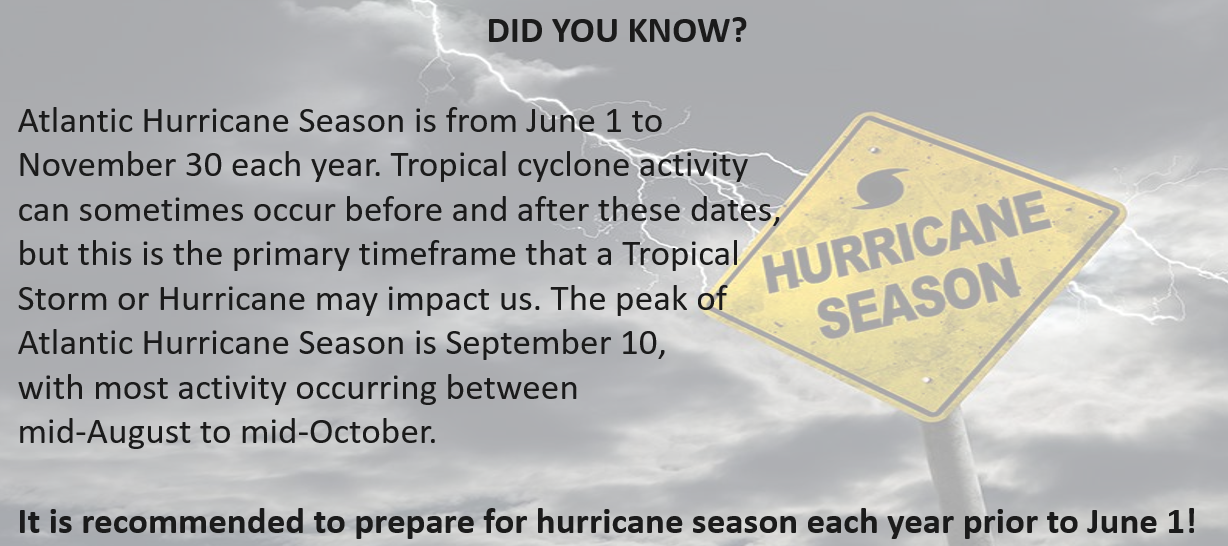
How we plan for a Tropical Storm or Hurricane
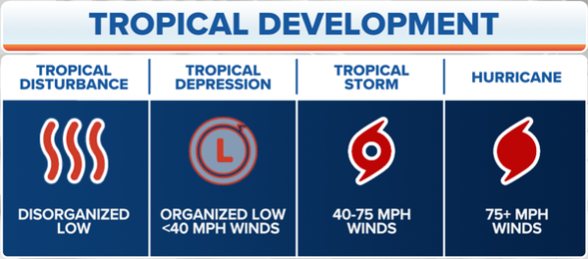
Storms develop and strengthen over time, beginning as a Tropical Disturbance and then escalating to a Tropical Depression, Tropical Storm, and finally a Hurricane. How quickly a storm develops and progresses through these stages depends on the conditions present during their formation. Some storms may dissipate instead of continuing to strengthen. Storms become named by the National Weather Service when they progress to a Tropical Storm. Emergency Management works with the National Weather Service to track storm projections and prepare as needed for upcoming storms that may impact St. Mary’s County.
| Category | Winds (MPH) | Damage |
|---|---|---|
| 1 | 74-95 | Minimal: Damage to building structures possible primarily to unanchored older model mobile homes. Damage to poorly constructed signs, shrubbery, and trees. Loose outdoor items become projectiles. Numerous power outages. |
| 2 | 96-110 | Moderate: Damage to building structures possible primarily to unanchored older model mobile homes. Damage to poorly constructed signs, shrubbery, and trees. Loose outdoor items become projectiles. Numerous power outages. |
| 3 | 111-129 | Extensive: Damage to building structures possible primarily to unanchored older model mobile homes. Damage to poorly constructed signs, shrubbery, and trees. Loose outdoor items become projectiles. Numerous power outages. |
| 4 | 130-156 | Extreme: Damage to building structures possible primarily to unanchored older model mobile homes. Damage to poorly constructed signs, shrubbery, and trees. Loose outdoor items become projectiles. Numerous power outages. |
| 5 | >156 | Catastrophic: Damage to building structures possible primarily to unanchored older model mobile homes. Damage to poorly constructed signs, shrubbery, and trees. Loose outdoor items become projectiles. Numerous power outages. |
Hurricanes are rated on the Saffir-Simpson Wind Scale based on the sustained wind speed. The scale has five categories, with Category 1 assigned to a minimal hurricane and Category 5 to a worst-case-scenario hurricane. Categories 3 to 5 are defined as major hurricanes. The scale helps Emergency Management officials to appropriately gauge response and understand the risk to the community.
Click here to view a map of current storm systems in the Atlantic.
Although St. Mary’s County has not been directly hit by a hurricane recently, it is very vulnerable to one by virtue of being a peninsula. The county is subject to the wind and flooding effects from hurricanes that hit the east coast and travel inland.
How to prepare for a Tropical Storm or Hurricane
Know Your Zone!
Residents may be told to evacuate during a hurricane based on their evacuation zone. Stay informed of your evacuation zone by using the Know Your Zone tool.
Knowing your zone is as easy as A-B-C!
Click the Find Your Zone Button
Enter Your Address
See your zone on the map

Be Informed – Visit https://www.stmaryscountymd.gov/ES/BeInformed/ to sign up for Code Red alerts!
Make a Plan – Visit https://www.stmaryscountymd.gov/ES/MakeAPlan/ to learn how to make a plan for you and your loved ones!
Build a Kit – Visit https://www.stmaryscountymd.gov/ES/BuildAKit/ to learn what to put in your home preparedness kit!
Before hurricane season starts, we recommend doing the following things to prepare your home:
- Know how to secure any outdoor items, such as patio furniture and trash cans, to prevent them from being moved by wind in the event of a storm.
- Keep your gas tank full, in case you must evacuate.
- Know your evacuation route, following “Hurricane Evacuation Route” signs as other roads may be closed during a storm.
- Get sandbags and storm shutters or plywood so that you can protect your home if a storm develops.
Click here for more information on preparing for a hurricane.
